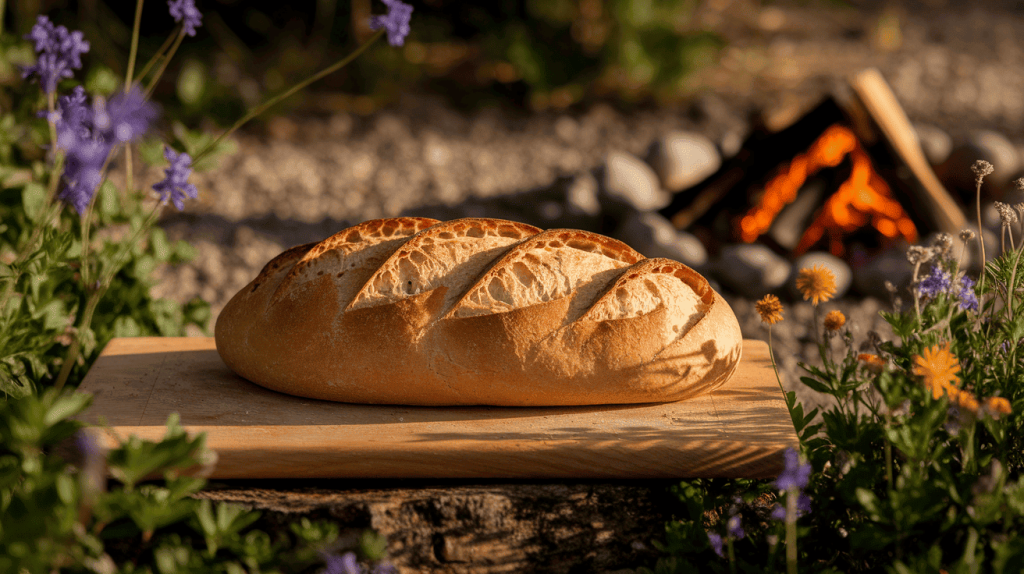There’s something profoundly magical about baking bread over an open fire that connects us to our ancestral roots.
Campfire bread cooked in a Dutch oven represents the perfect marriage of ancient culinary tradition and outdoor adventure.
This rustic loaf, with its crackling crust and pillowy interior, transforms a simple camping meal into an unforgettable sensory experience.
The Dutch oven is the ideal vessel for this wilderness baking ritual. It creates a miniature outdoor hearth that distributes heat evenly and seals in moisture for the perfect rise.
As the dough changes within this cast iron sanctuary, the intoxicating aroma of baking bread wafts through the campsite, drawing everyone together in shared anticipation.
More than just sustenance, Dutch oven campfire bread embodies the essence of outdoor cooking—slowing down time and rediscovering the profound satisfaction of creating something extraordinary with the most basic elements under the open sky.
What is Campfire Bread?
I’ve always believed there’s something magical about cooking outdoors. When I first found campfire bread, it felt like uncovering a treasured secret from our ancestors.
Campfire bread is essentially any bread baked over an open fire, but there’s so much more to it than that simple definition. It’s a hearty, rustic loaf that connects us to cooking traditions dating back centuries.
The smoky aroma that wafts through the campsite as it bakes brings everyone together, creating moments of anticipation and joy.
I’ve found that nothing compares to breaking open a warm loaf of freshly baked bread while sitting under the stars.
The crispy crust and soft interior provide comfort that’s unmatched by store-bought alternatives. For me, campfire bread isn’t just food—it’s an experience that enriches any outdoor experience.
Why Use a Dutch Oven for Campfire Bread?
I learned early in my outdoor cooking expedition that Dutch ovens are absolutely essential for perfect campfire bread.
These heavy cast iron pots with tight-fitting lids create an ideal enclosed baking environment that mimics your kitchen oven.
What I love most is how the cast iron distributes heat evenly, eliminating hot spots that might burn my bread. The weight of the lid seals in moisture, creating the perfect steamy environment for a beautiful rise and that gorgeous crust I crave.
I’ve tried other methods, but nothing compares to watching my dough change in this versatile pot. When I place hot coals both underneath and on top of my Dutch oven, I’m essentially creating a miniature outdoor oven.
The result is consistently delicious bread with that distinctive rustic quality that has made gathering around my campfire a treasured tradition among friends and family.
Dutch Oven Campfire Bread
The crackling fire meets ancient culinary wisdom in this outdoor baking ritual. As your Dutch oven transforms from a humble pot to a wilderness hearth, you’ll create bread with a character impossible to replicate in any kitchen.
The contrast of the crackling crust against the pillowy interior captures the very essence of open-air cooking.
This isn’t just a recipe—it’s an invitation to slow down and rediscover the profound satisfaction of creating something extraordinary with the most basic elements.
Materials & Ingredients
The right tools and quality ingredients will ensure your campfire bread develops that coveted rustic character that can’t be replicated in a conventional kitchen.
| ITEM | QUANTITY / NOTES |
|---|---|
| All-purpose flour | Enough for dough (exact amount not specified) |
| Warm water | ~300 ml |
| Yeast | Approx. 1 packet |
| Salt | Small pinch or as preferred |
| Golden caster sugar | Small amount (about 1 tbsp) |
| Butter (homemade) | About 1 tbsp or slightly more |
| Heavy cream (for butter) | Fill glass jar halfway |
| Dutch oven with lid | Lined with baking paper |
| Baking paper | To prevent burning and easy removal |
| Cling film | To cover dough during proofing |
| Butter knife | For mixing dough |
PRO TIP: Preheat your Dutch oven by placing it near (not directly in) the fire for 10 minutes before adding your dough. This creates a more even cooking temperature and helps develop that perfect crisp crust while preventing the bottom from burning.
Step-by-Step Instructions
Now comes the rewarding part where flame meets flour. This method balances simplicity with wilderness ingenuity, transforming basic ingredients into a rustic masterpiece.
Each step builds toward that perfect balance of crackling crust and tender interior that makes campfire bread unforgettable.
Follow these instructions carefully, and remember that patience is as important an ingredient as any you’ve measured.
Step 1: Start the Campfire
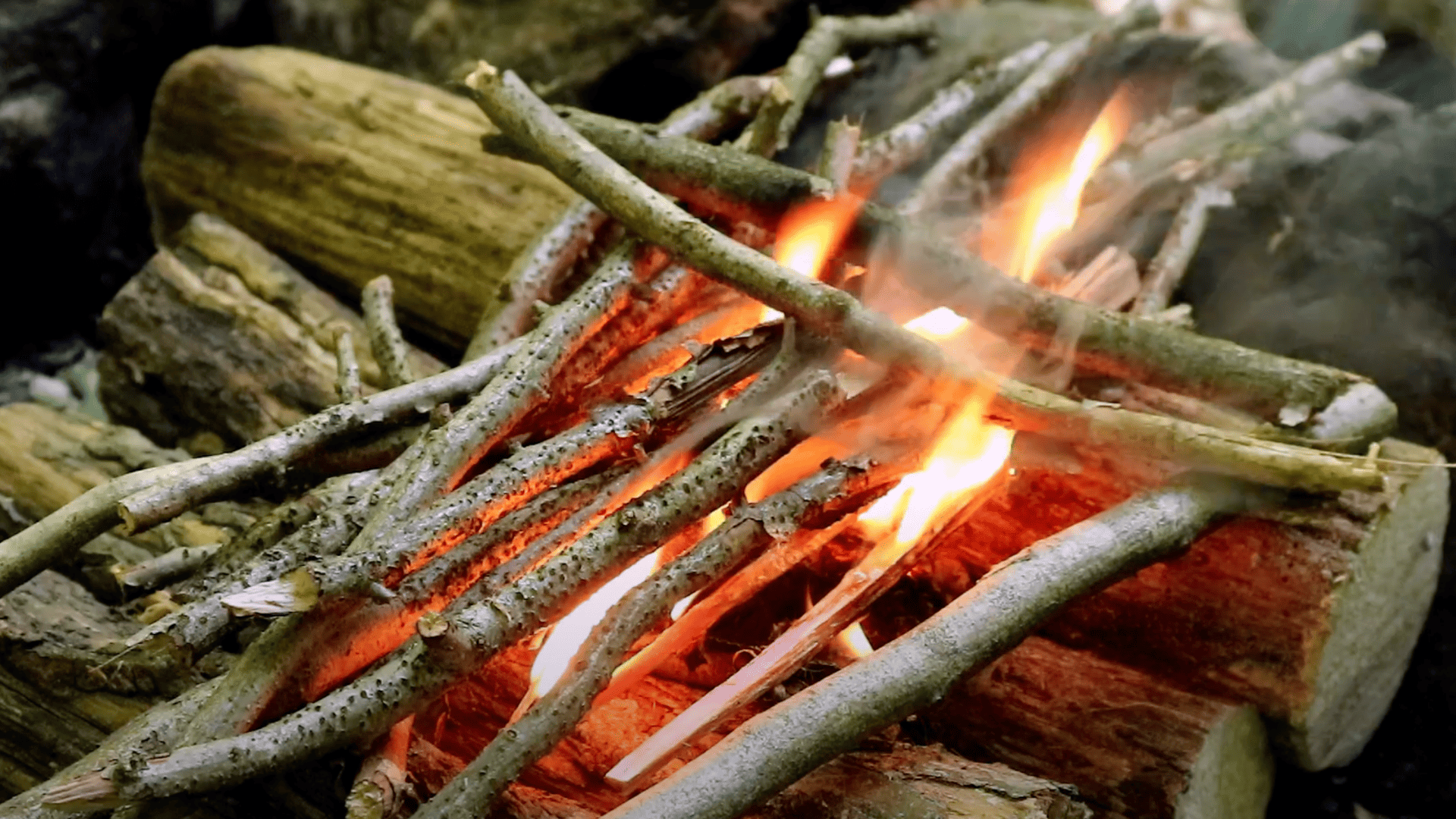
- Gather dry oak or other wood.
- Set up the fire using birch bark, fatwood, or jute twine to get it going.
- Let it burn down to create a good coal base.
Step 2: Make the Butter (Optional but Fun!)
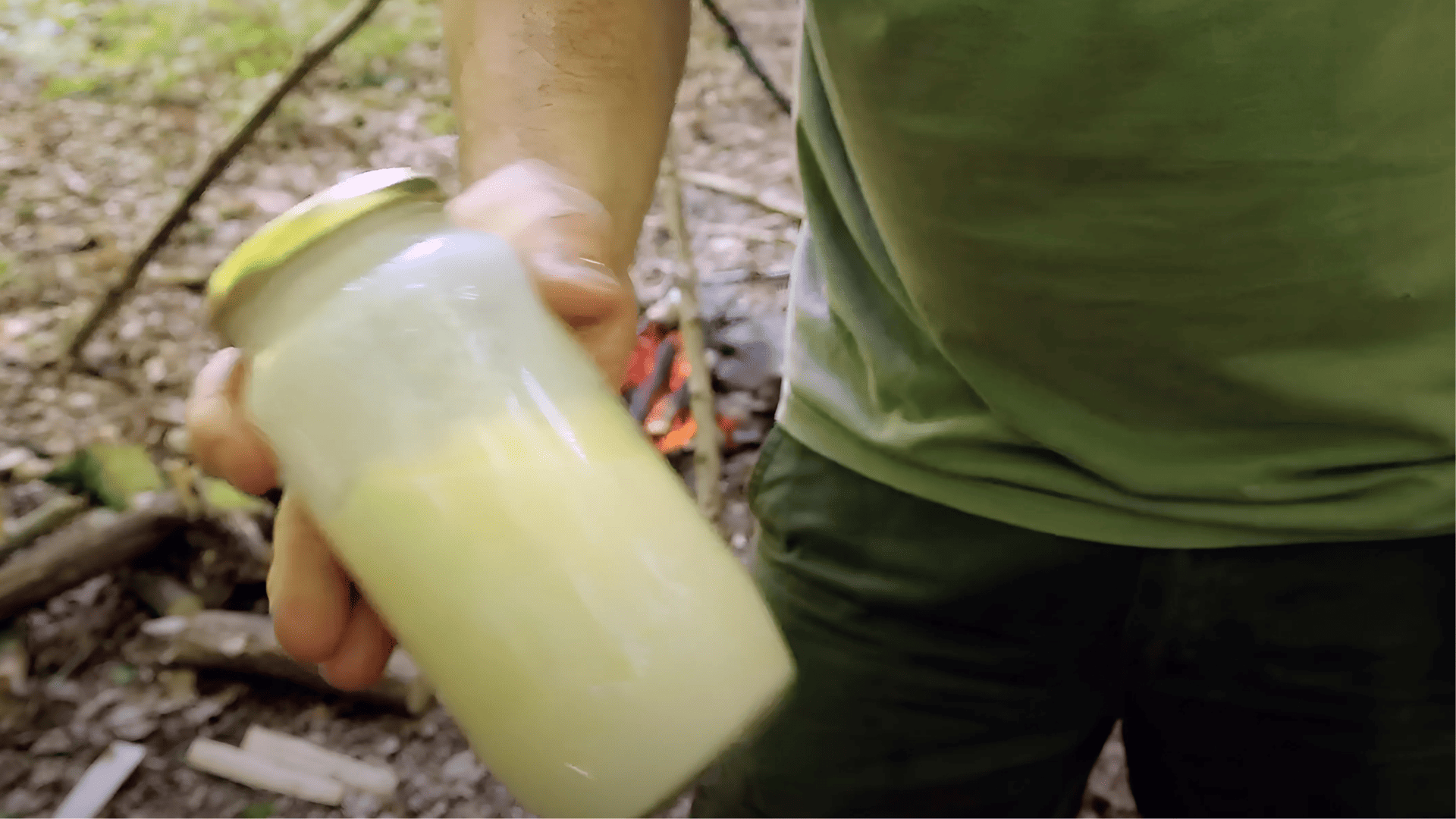
- Pour heavy cream into a jar until it’s half full.
- Close it tightly and shake for about 10 minutes.
- Keep shaking until you hear a lump and liquid separating—that’s your butter.
- Drain the liquid (buttermilk) and keep the solid butter.
Step 3: Prepare the Dough
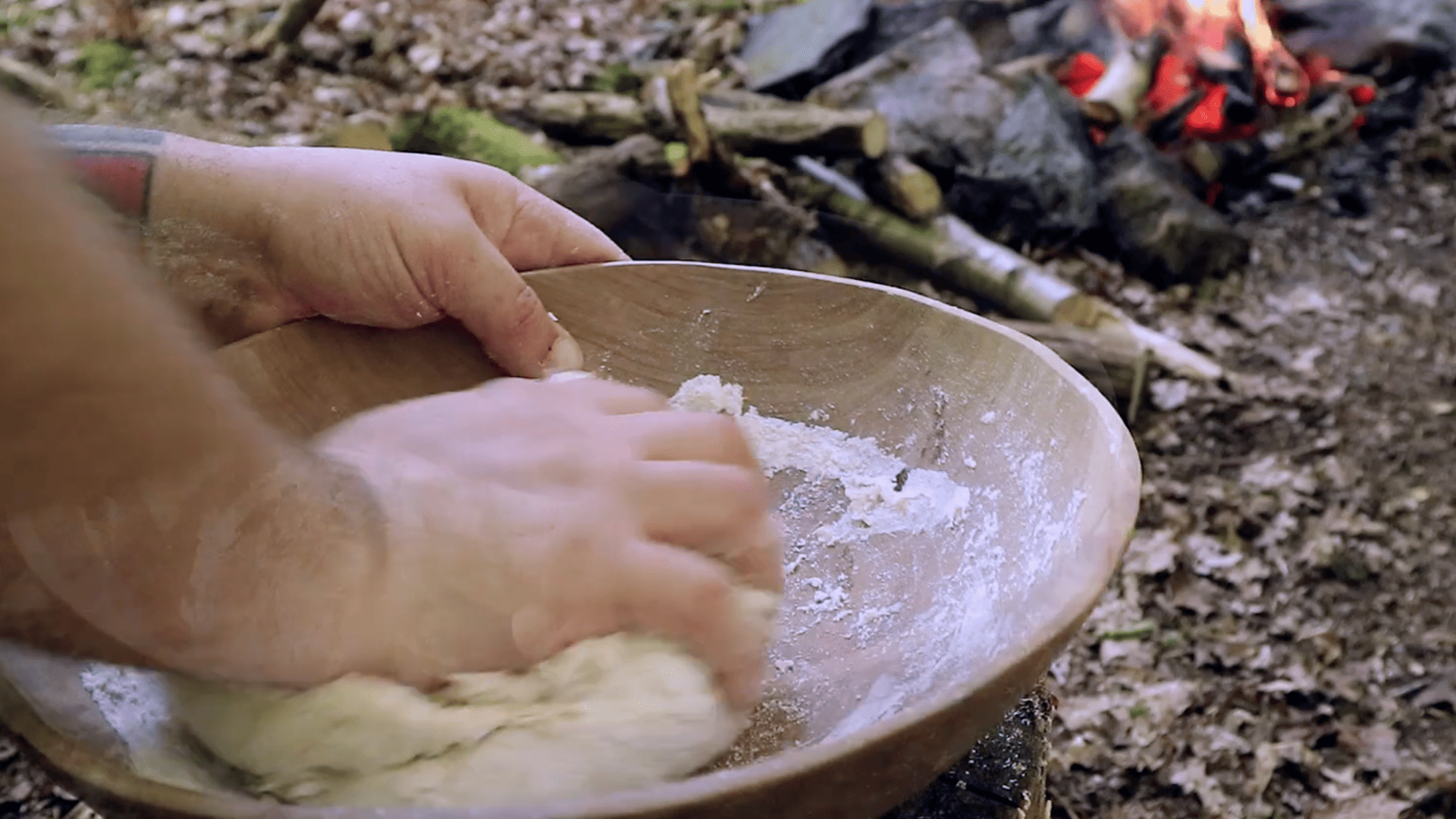
- In a bowl, mix flour, yeast, salt, and a tablespoon of golden caster sugar.
- Add about a tablespoon of your homemade butter.
- Slowly pour in the warm water (not all at once).
- Mix using a butter knife until it forms a shaggy dough.
- Switch to using your hands and knead until it’s smooth and elastic.
Step 4: Let It Rise
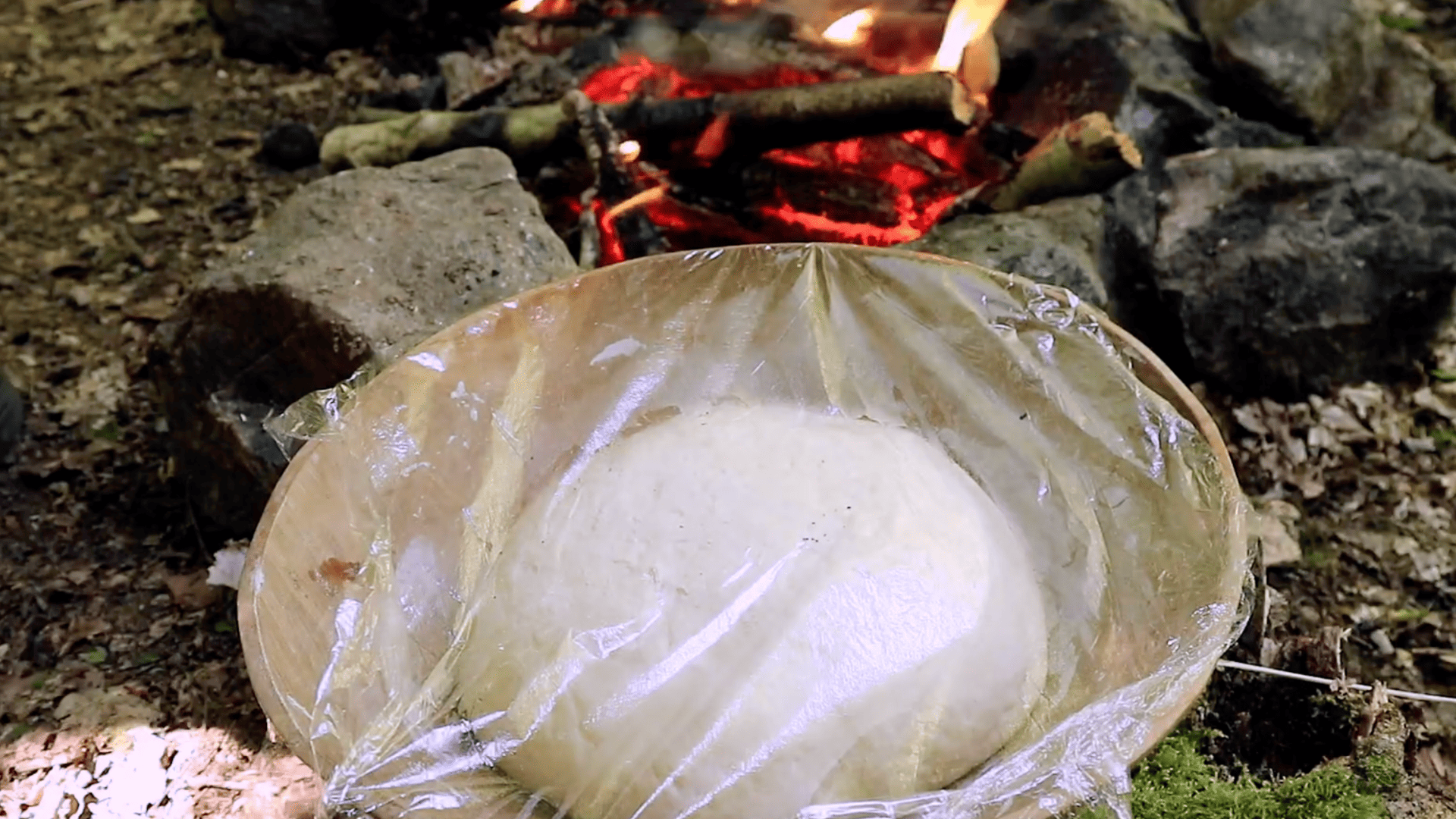
- Cover the bowl with cling film.
- Place it near the campfire (not too close) to let it rise.
- Let it double in size.
Step 5: Bake the Bread
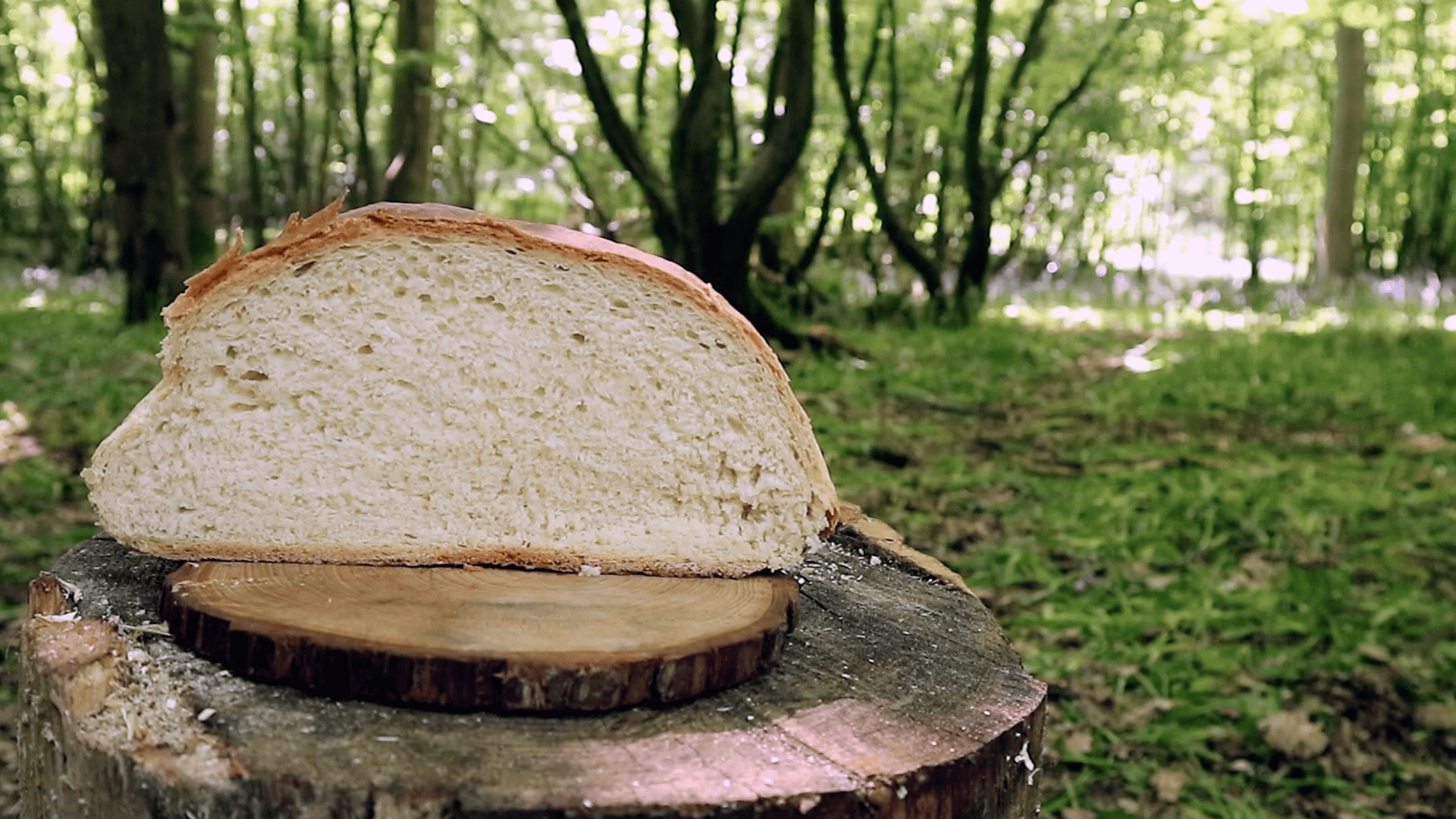
- Put the lid on the Dutch oven.
- Hang it over or place it near the fire. Use heat from both the top and bottom to bake it.
- Rotate it occasionally to help the sides cook evenly.
- Near the end of baking, you can move it closer to the fire to color the sides.
Nothing beats the smell of fresh campfire bread after a long day outdoors. Try it once, and it might become your favorite camp treat.
Video Tutorial by Kent Survival
Creative Variations of Campfire Bread
The wilderness canvas of campfire bread offers endless possibilities for customization. Beyond the basic recipe’s rustic simplicity lies a world of creative variations that transform your outdoor baking experience.
Each adaptation builds on the fundamental techniques while introducing new dimensions of flavor and texture. These variations honor the primal simplicity of fire-baked bread while allowing your culinary creativity to shine.
Consider these modifications as starting points for your wilderness bread experiments—the combinations are as limitless as your imagination and the ingredients you’re willing to carry in your pack.
Adding Herbs and Cheese
Fresh herbs and cheese elevate campfire bread from simple to sublime. For aromatic depth, fold chopped rosemary, thyme, or sage directly into your dough.
For cheese lovers, incorporate cubes of hard cheese like cheddar or gruyère that create pockets of melted goodness throughout.
The cast iron’s heat changes these additions, intensifying their flavors while creating irresistible texture contrasts.
Pro tip: Reserve some herbs and cheese to sprinkle on top just before baking for a beautifully rustic presentation.
Sweet Campfire Bread Ideas
Add cinnamon, dried fruits, and nuts to transform your wilderness loaf into a dessert-worthy treat. A handful of dried cranberries or chopped apples paired with walnuts creates a festive flavor profile.
For indulgent moments, fold in chocolate chips that melt into heavenly pockets throughout the warm bread.
A light dusting of sugar on top before baking creates an insubstantial, sweet crust that perfectly complements the smoky notes from your campfire. Serve warm with a drizzle of honey for an unforgettable outdoor dessert.
Conclusion
The simple way of creating Dutch oven campfire bread surpasses mere cooking—it’s a soulful connection to simpler times when food preparation was an intentional ritual rather than a hurried necessity.
Whether you prefer the classic rustic loaf variations with herbs, cheese, or sweet additions, the result is always more than the sum of its ingredients.
The contrast between the crackling crust and tender interior captures the very essence of wilderness cooking, impossible to replicate in any conventional kitchen.
As you gather around the fire, breaking warm bread under starlit skies, you participate in a timeless tradition that feeds both body and spirit.
The smoky aroma, the satisfying texture, and the shared experience create memories that linger long after the embers fade.
In our fast-paced world, few experiences offer such profound satisfaction as this perfect fusion of flame, flour, and fresh air.

